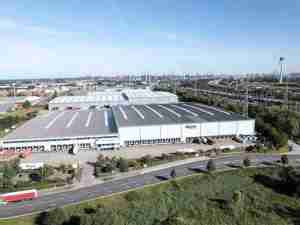The first study, Assessment of Port Performance and Port Connectivity Study in Belize, Central America and the Dominican Republic, evaluates port performance and the connectivity of 18 ports in Belize, Central America and the Dominican Republic. The second report, Trucking services in Belize, Central America and the Dominican Republic: performance analysis and policy recommendations, assesses the trucking industry and makes recommendations going forward.
The reports were released at a seminar on logistics at the IDB’s Annual Meeting in Panama City. The IDB called for countries to establish national logistics agendas to improve policy coordination and tackle bottlenecks that hurt the region’s ability to compete in the global marketplace.
Efficient logistics performance requires the public sector to act at the regional, national and local levels, under a coordinated agenda, with shared priorities and objectives, based on consistent information that aids in defining public policies and allows continuous monitoring.
The need for more coordination is especially urgent as the expansion of the Panama Canal will accommodate post-Panamax vessels that carry 12,600 containers, against 4,500 for the current ones. Today only two countries can handle post-Panamax vessels in Central America and the Dominican Republic: the Dominican Republic through the port of Caucedo, and the Panama terminals.
New freight transportation dynamics
Post-Panamax vessels will profoundly change the dynamics of freight transportation. Instead of ships calling on multiple ports and handling small cargo loads, post-Panamax vessels will be serviced with much greater volumes into a hub and spokes system. This system will require ports and roads to handle larger cargo loads more quickly and efficiently.
"The region needs to change course in the way it handles freight logistics to enhance its integration with the world and continue to grow," said Alexandre Meira da Rosa, manager of the IDB’s Infrastructure and Environment Sector. "Companies may be extremely efficient producing goods at low prices, but if there are inefficiencies in shipping and transporting these goods within the country, by the time they ship abroad they lose their competitive advantage."
High transport costs also prevent the country’s products from effectively competing in the global market. For example, in Central America, transport and logistics can account for up to 20-60 percent of delivered food prices.
The study assesses the readiness of 18 ports in 7 countries in Central America plus the Dominican Republic, in areas that range from transport and trade regulations to geography. For instance, only one–Caucedo–received a "very good" rating in land connectivity, which factors in road congestions, security and the number of lanes at port gates, among other. Six ports received "good" ratings, four were "adequate" and seven were "poor."
"Transportation in the mainland of Central America is complex," the study on ports says, "as the region is too small and does not have enough volume for a dense short-sea shipping maritime network but too big and lacking in road infrastructure to be adequately served by land for national and international trade needs."
The report recommends countries develop a national coordinating body to oversee both sea and land transport, and highlights that an integrated sea-land intermodal transportation network is crucial for future development of the region.
The second study looks at the trucking industry, from regulations to cargo security and border crossings. Trucking rates are expensive and security costs high, the report finds, and the lack of low-sulf









